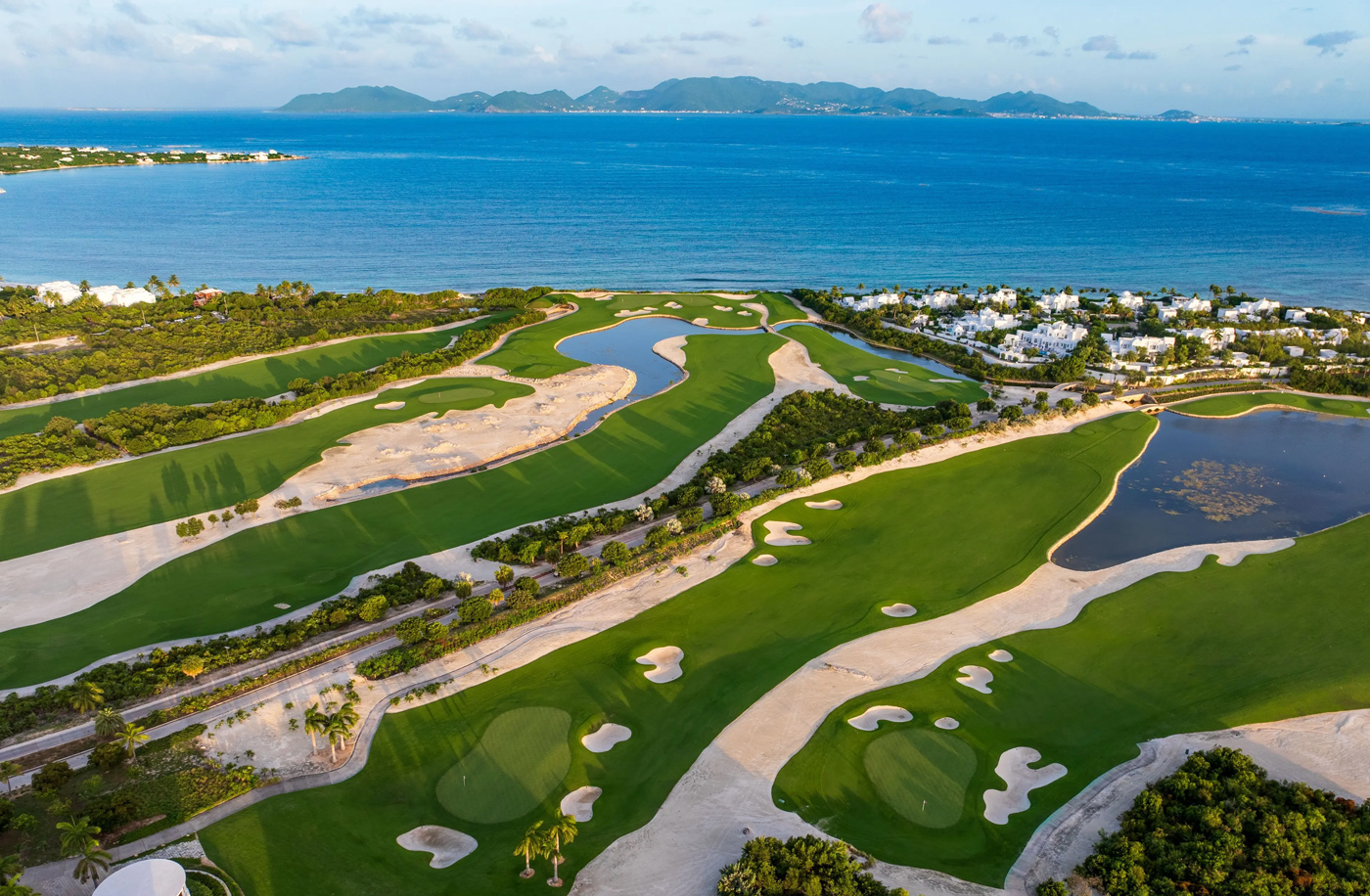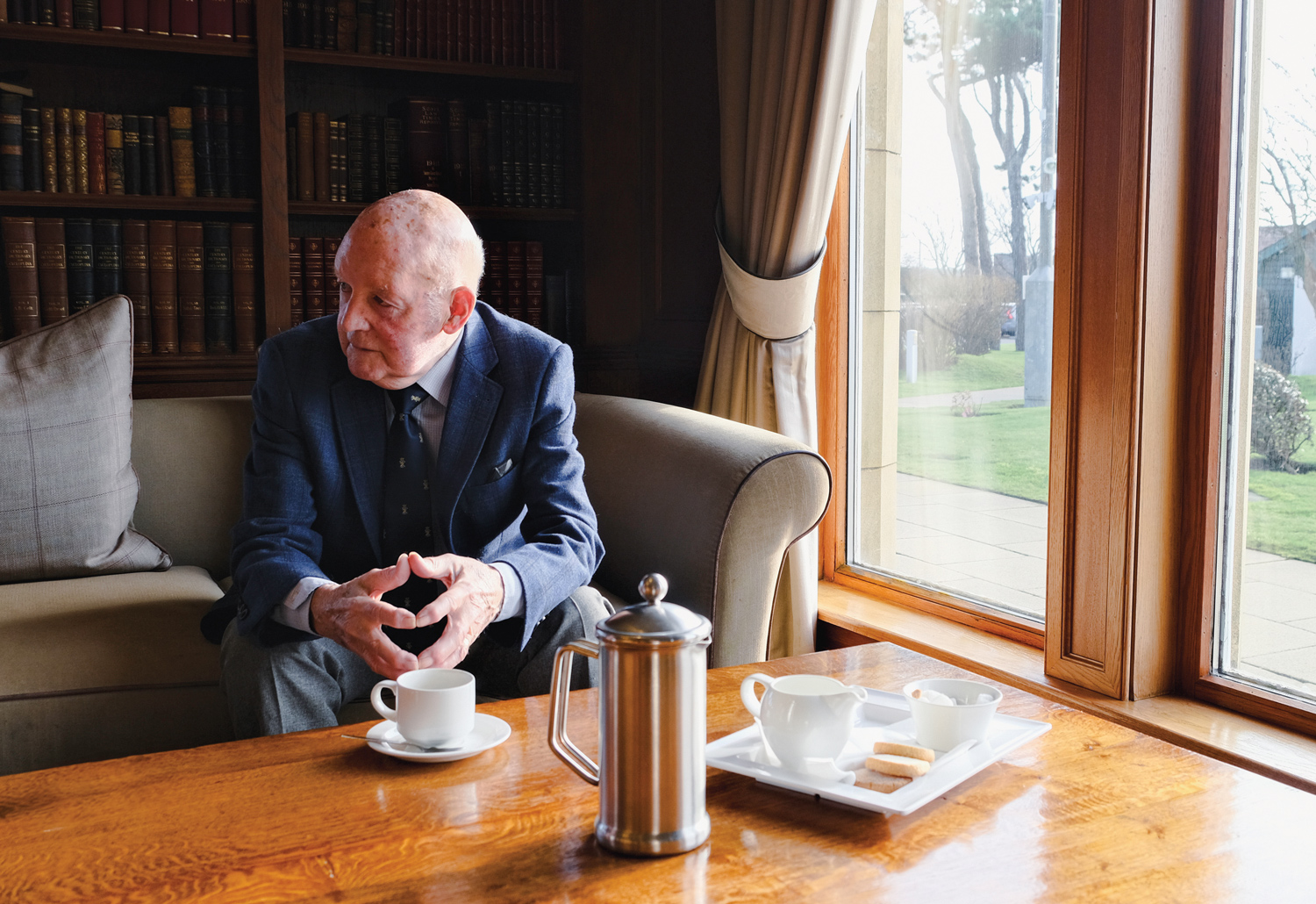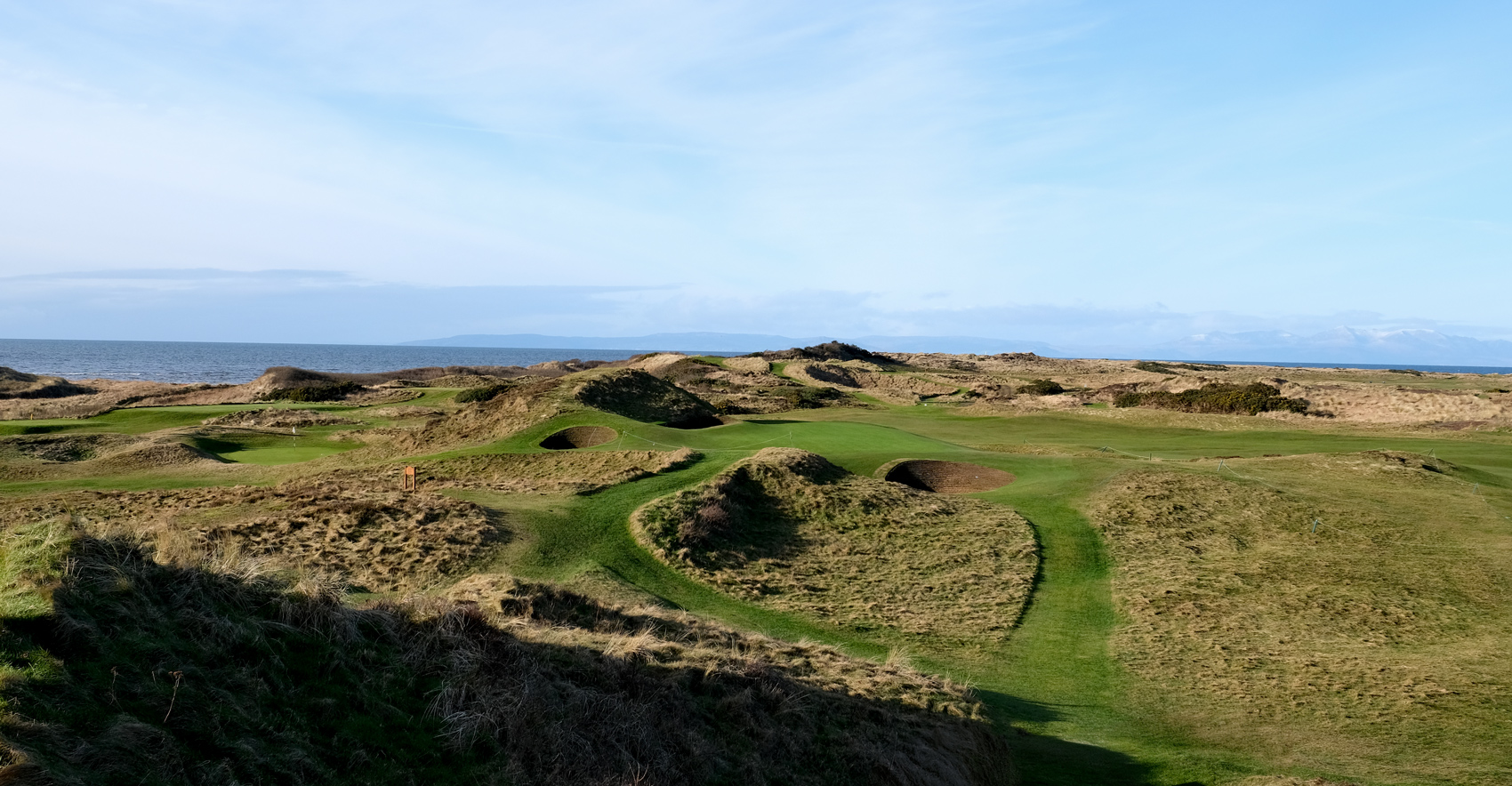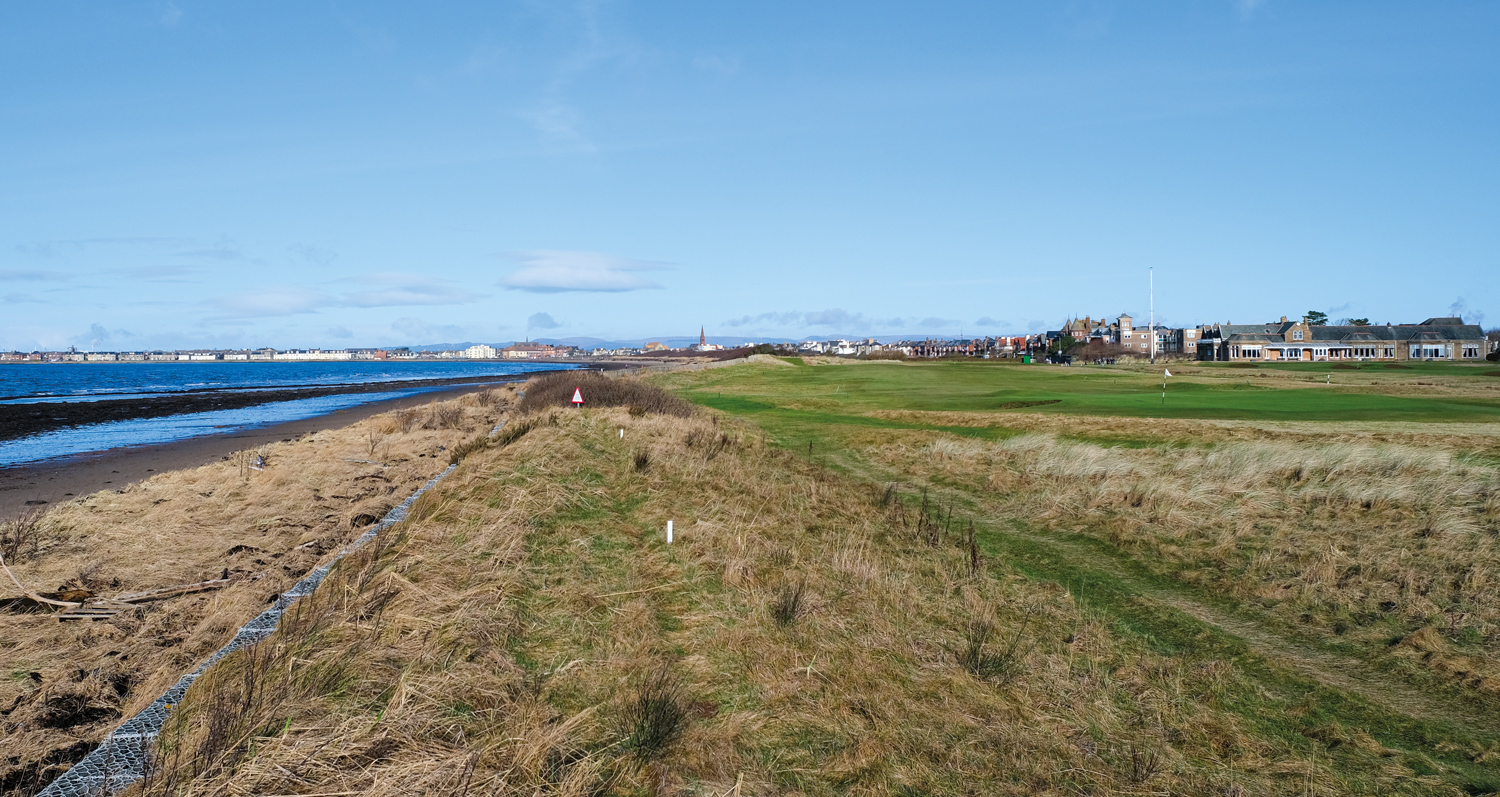
n July 14, 1962, the headline on the back page of Britain’s Daily Mail called it a “crowd riot.” The paper reported that Arnold Palmer, playing the final hole of The Open at Troon the day before, “ran for his life.” It continued: “The crowd, about 30,000 strong . . . engulfed him, tossing him and almost trampling him underfoot. Police rescued him and cleared a way for him to reach his ball on the green.”
The crowd size might have been exaggerated, but Palmer was certainly jostled as he won the Claret Jug for the second time, defeating Kel Nagle by six clear shots on Scotland’s west coast. Chaos reigned.
“Anyone who saw . . . the appalling state of disorder, when the behaviour of an enormous crowd towards Palmer and Nagle was discourteous in the extreme, will urge for a revision in stewarding methods,” wrote Donald Steel in The Sunday Telegraph, on July 15, 1962.
Steel was reporting on The Open for the second time, his debut being Palmer’s first Open triumph in 1961 at Royal Birkdale. Today, at 86, and having enjoyed a heralded career as reporter and golf course architect, he reflects on being caught amid the rampage that day. “It made watching the final pair quite difficult,” recalls Steel, who was enlisted to update the Old Course at Royal Troon years later. (The club became ‘Royal Troon’ upon its centenary in 1978.) “If you wanted to see what was happening, you had no choice but to be part of this crowd. I was young, and it was fine for me, but it made it difficult for others.”

Local amateur Stewart Wilson qualified for The Open in 1962, when he was 25 years old. He played in the first two rounds but missed the cut—and kept a safe distance on the Friday, when the final two rounds were played.
“Palmer even lost his shoe coming down the last hole when someone stepped on it,” recalls Wilson, a past club president of Royal Troon, over coffee in the clubhouse (with our every move observed by Palmer, from his portrait above the fireplace). “There was no crowd control. There were strings along the sides of the fairways, and there were stewards with wee flags, doing their best.”
Multiple factors led to the chaos of the 1962 Open, the first being Palmer’s magnetism. In the summer of ’62, Palmer was in his absolute prime as a golfer. Aged 32, he arrived in Troon as the winner of five major titles within the previous four years, and he was The Open’s reigning champ. With his strong, athletic build, the looks and smile of a Hollywood hero and charisma to match, he inspired even the oft-cynical media to swoon, sports fans even more so.
Reporting for the UK’s Guardian newspaper, Pat Ward-Thomas wrote at the time that Palmer possessed “that rare blend of immense self-confidence and true modesty,” adding that he “remains a delightful, friendly human being who commands respect and affection.”
Palmer first traveled to Britain to play in The Open in 1960, when he lost by a stroke to Nagle. He returned in 1961 to win at Birkdale in a gale, and his dedication to The Open in the early sixties pushed the oldest of the four majors out of its post–World War II doldrums and into the international limelight.
“There is no question that Palmer was the driving force behind the growth of The Open,” says Wilson, who won the British Boys Championship in 1955. “I can’t stress too much how important it was for The Open that Arnold Palmer came over. That day at Troon, the people came to see Arnold Palmer.”
“He was a very, very good influence on The Open,” Steel adds. “He was just what the game needed, at the right time.”
The “right time” coincided with the fast evolution of outdoor broadcasting and televised sports, and Palmer’s photogenic appeal and attacking brio brought golf from the fringes of professional sport and onto television screens around the globe. The sports fans of Scotland knew about Palmer—they had seen him on TV, and they knew that The Open at Troon was a rare opportunity to see a genuine sporting icon at his best. Right on cue, Palmer shot 69 in the second round on the Thursday, to carry a two-shot lead into the final day.

Then there was the weather. So often each July, The Open somehow turns summer into winter—as it had done with the storms at Birkdale in ’61, and with flooding at St Andrews in ’60. Yet in 1962, on this windswept stretch of Ayrshire coastline, sunshine lit The Open, the ground conditions were very firm, and so the prospect of watching the final day’s play was all the more tempting. Not only this, but the train station at Troon was a short walk from the golf course and received a regular service from Glasgow Central station, just 30 miles inland.
There was one more thing: The Open finished on a Friday (in keeping with tradition, to allow participating club professionals to return to their home clubs to serve their members on the Saturday), and July 13, 1962, coincided with the Glasgow Fair Fortnight. This was another annual tradition, instigated by the big factories and shipbuilders of the major industrial centers, when factories and ship-building yards would shut altogether for two weeks and allow vacation time to their workers all at once, to maximize efficiency. During the Glasgow Fair, with schools also closed, workers and their families would stream out of the city and usually head to the beach.
The Open’s organizers, the R&A, recorded an official total attendance of 37,098 for the 1962 Open, which would represent the tournament’s second-largest attendance at the time (behind 39,563 at St Andrews in 1960). But the figure likely represents the number of tickets sold and underestimates the size of the final-day rush.

“They came through the Aberdeen Gate,” offers Wilson with a mischievous smile, yet this claim requires explanation, because Aberdeen is 170 miles away, on Scotland’s east coast.
“Aberdeen people are thought to be tight,” chuckles Wilson, an inhabitant of Scotland’s west coast all his life, “so the Aberdeen Gate is how a lot of people got into the championship that day, having walked from the station, along the shore and straight up onto the golf course, without paying.”
Glaswegians poured through the Aberdeen Gate for the final day of the ’62 Open. The Glasgow Herald estimated a crowd of 15,000 for the day; the Mail claimed 30,000. We’ll never know. What we do know is that the fairway strings and stewards with “wee flags” never stood a chance.
The Open was caught completely unprepared, prompting Palmer to admit later to reporters, “I’ve never seen anything to compare to this anywhere in the world. It was frightening at times.”
Two years later, in his book entitled Portrait of a Professional Golfer (which was in fact a self-portrait), Palmer wrote on the ’62 Open: “Gallery control in Britain isn’t anywhere near as tight as it is in most major tournaments at home. There were some real stampedes.”
Ward-Thomas blasted in The Guardian that it had been a “disgusting exhibition by a huge stampeding crowd. Never has one seen such a revolting disregard for stewards and police. The whole conception of stewarding must be reviewed. It was pathetically inadequate for crowds that behave in this manner.”
He concluded: “Palmer’s presence these past three years has brought greatness once more to the old championship . . . Now the organization of the championship must match the quality of a great champion.”
Troon’s greens may have been trampled that day, the fairway strings snapped, but no serious injuries were reported, and no deaths. And a year later, at Royal Lytham & St. Anne’s, Palmer was off his game, golf course access was easier to control, and decorum was restored. The chaos of July 13, 1962, was a one-off, and when The Open returns to Troon this July, the Aberdeen Gate will be bolted shut.
Follow Us On


| Cookie | Duration | Description |
|---|---|---|
| cookielawinfo-checkbox-analytics | 11 months | This cookie is set by GDPR Cookie Consent plugin. The cookie is used to store the user consent for the cookies in the category "Analytics". |
| cookielawinfo-checkbox-functional | 11 months | The cookie is set by GDPR cookie consent to record the user consent for the cookies in the category "Functional". |
| cookielawinfo-checkbox-necessary | 11 months | This cookie is set by GDPR Cookie Consent plugin. The cookies is used to store the user consent for the cookies in the category "Necessary". |
| cookielawinfo-checkbox-others | 11 months | This cookie is set by GDPR Cookie Consent plugin. The cookie is used to store the user consent for the cookies in the category "Other. |
| cookielawinfo-checkbox-performance | 11 months | This cookie is set by GDPR Cookie Consent plugin. The cookie is used to store the user consent for the cookies in the category "Performance". |
| viewed_cookie_policy | 11 months | The cookie is set by the GDPR Cookie Consent plugin and is used to store whether or not user has consented to the use of cookies. It does not store any personal data. |